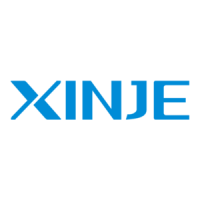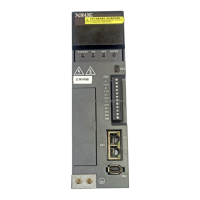The rigidity level should be set according to the actual load. The larger the P-04 value, the greater the
servo gain. If there is vibration in the process of increasing the rigidity level, it is not suitable to
continue to increase. If vibration suppression is used to eliminate vibration, it can try to continue to
increase. The following is the recommended rigidity level of the load, for reference only.
1
20
40
60
Large Load of
Flexible Structure
High Rigid
Load
Light-load Ultra-
high Response Load
Flexible structure large load: refers to the type of synchronous belt structure, large load inertia
equipment.
High rigid load: refers to the mechanism of screw rod or direct connection, and equipment with strong
mechanical rigidity.
Ultra-high response load under light load: refers to equipment with very small inertia, strong
mechanical stiffness and high response.
P1-01=2200
P1-02=300
P2-35=100
P2-49=400
P1-01=1650
P1-02=400
P2-35=100
P2-49=500
6.3.4 Notes
The gain parameters corresponding to the rigidity level can be independently fine-tuned in
the fast adjustment mode.
In order to ensure stability, the gain of model loops is small at low rigidity level, which can
be added separately when there is high response requirement.
When vibration occurs in fast adjustment, the torque instruction filter P2-35 can be modified.
If it is ineffective, the mechanical characteristic analysis can be used and the relevant notch
parameters can be set (refer to chapter 6.7 vibration suppression).
Fast adjustment mode defaults to set a rigidity level. If the gain does not meet the mechanical
requirements, please gradually increase or decrease the settings.
At present, gain switching function is not supported, that is, the second gain parameters such
as P1-05, P1-06, P1-07 are invalid.

